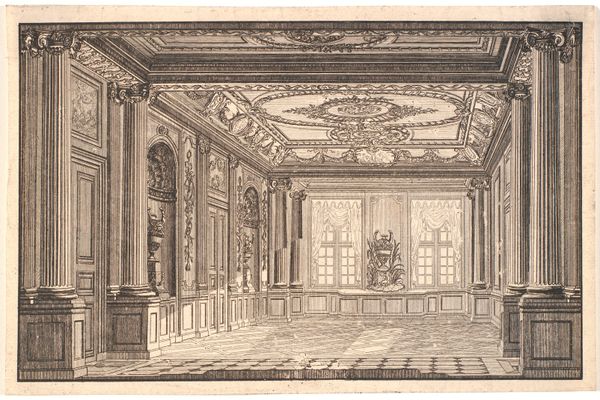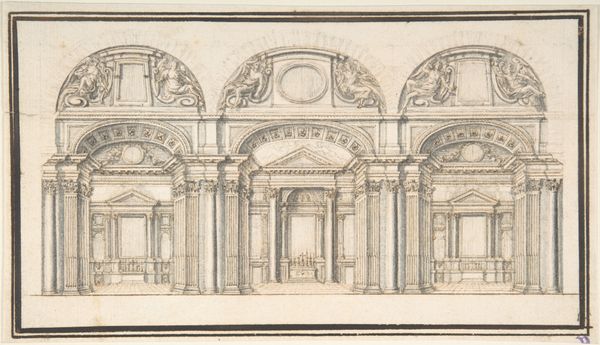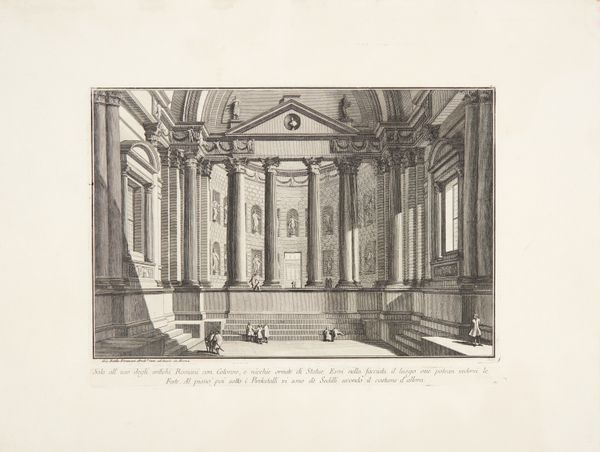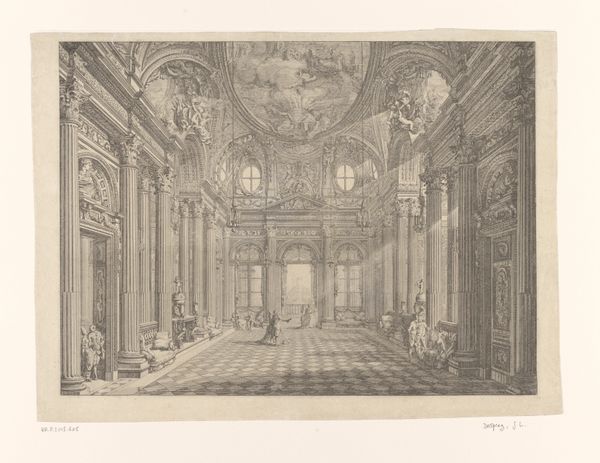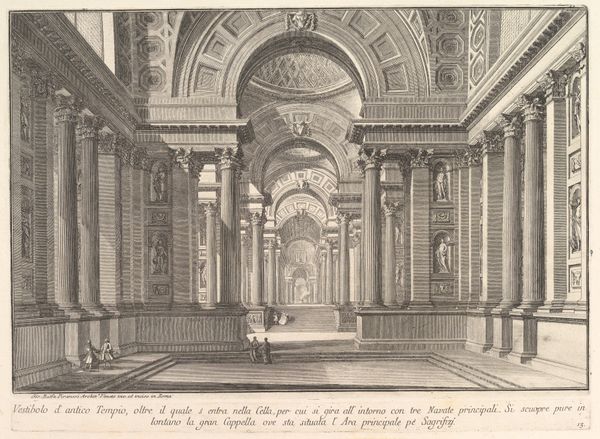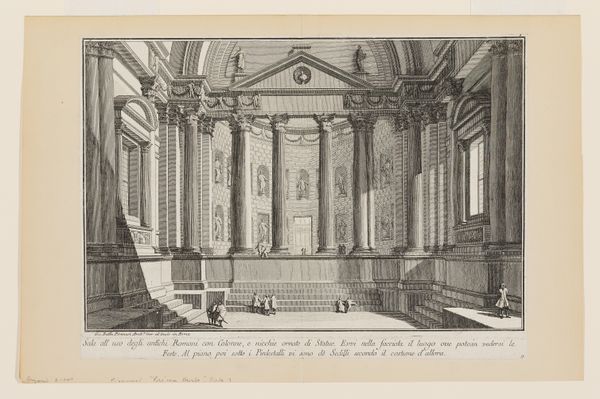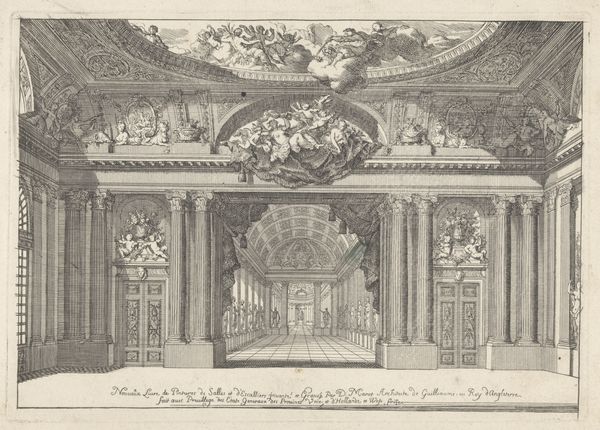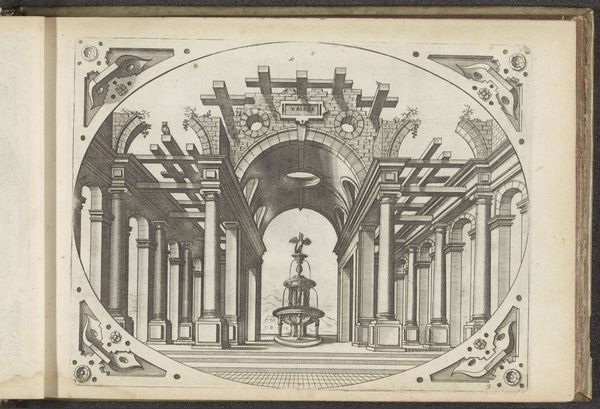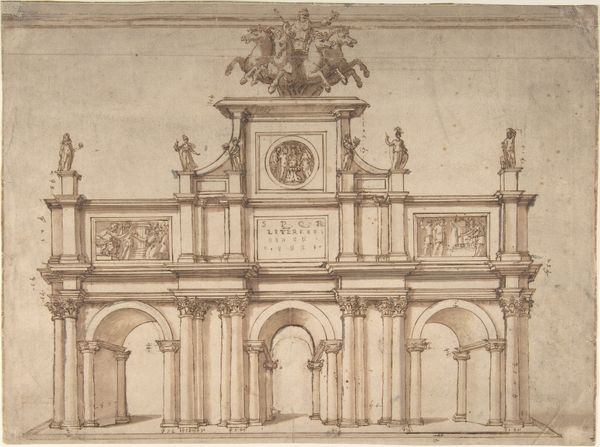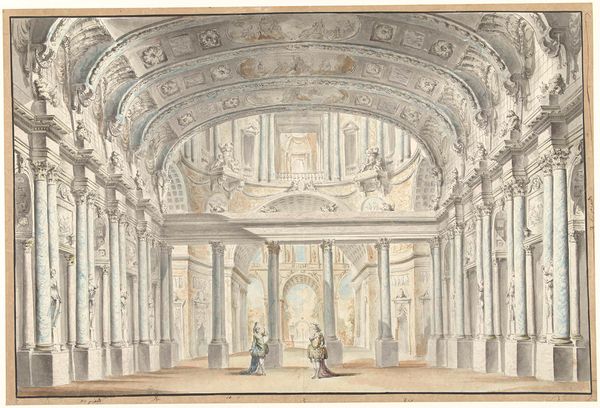
Dimensions: height 473 mm, width 560 mm
Copyright: Rijks Museum: Open Domain
Editor: Here we have Paulus Constantijn la Fargue's "Toneelscène in de Nederduitse Schouwburg te Den Haag" from 1767, created using pen, engraving and intaglio. I’m struck by the level of detail and the dramatic perspective he’s achieved. What aspects of this work stand out to you? Curator: What grabs me immediately is how this engraving documents the construction and consumption of theatre spaces in 18th-century Hague. Consider the labour involved: the quarrying of stone, the skilled carving of those Corinthian columns, the very specific geometric construction. It’s a document of materiality. Editor: I hadn't considered the literal building aspect. How does focusing on the material production affect how we see the final artwork presented on the stage? Curator: Well, it blurs the line between ‘high art’ – the drama being performed – and the craft involved in the very means of its staging. The engraving becomes less about the elite entertainment, and more about the labor needed for even this ephemeral event to occur. Note, too, the social context the materials imply – who had access to what quality of goods? What tradesmen benefited? Editor: So, you’re saying it redirects our focus from the artistic performance to the processes and social factors behind the stage itself? Curator: Exactly. And the choice of engraving itself reinforces this. It’s a reproducible medium, meant for wider circulation than, say, a painting of the same scene would have been. It allows a larger audience access to this theater and raises interesting questions. Who bought these prints and why? Were they architectural records or theatrical souvenirs? Editor: That's a perspective I wouldn’t have come to on my own. It really makes me consider the wider context of not just art, but also the making and circulation. Curator: Precisely! The materiality points beyond itself, opening a doorway to the social relations enmeshed in the world of 18th-century theatre and art production.
Comments
No comments
Be the first to comment and join the conversation on the ultimate creative platform.



